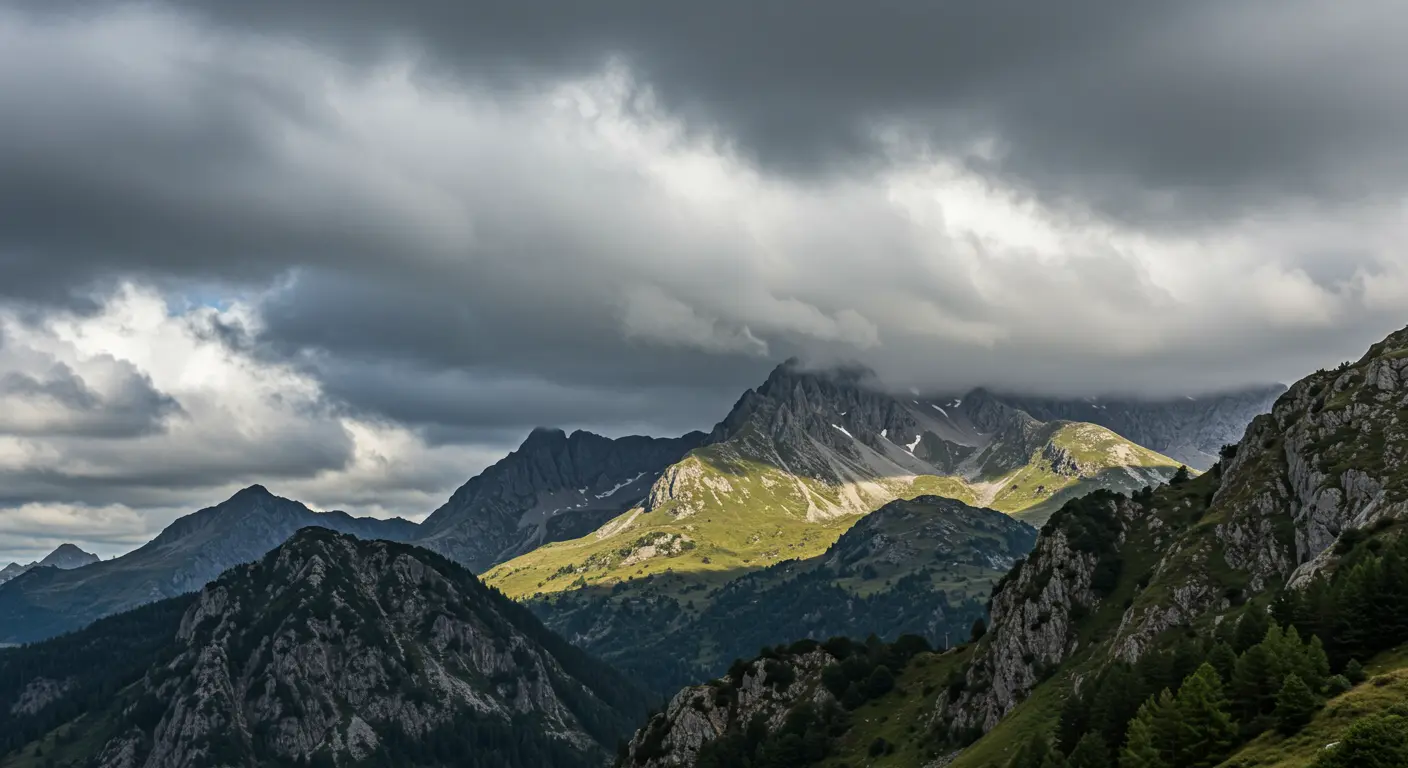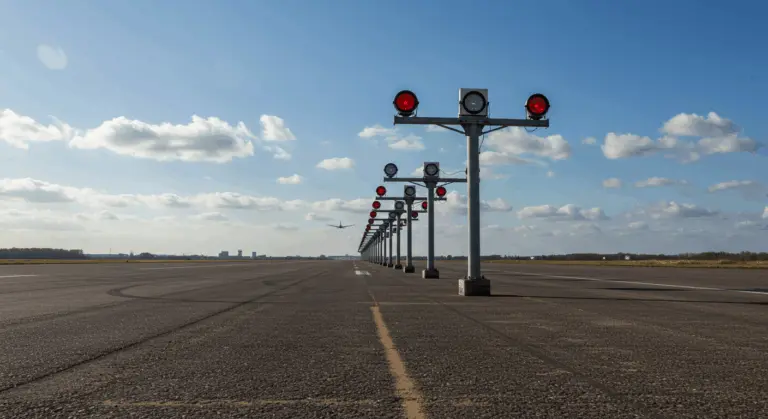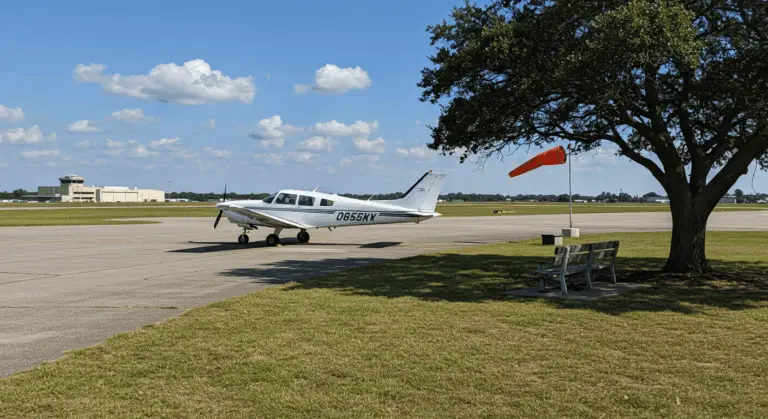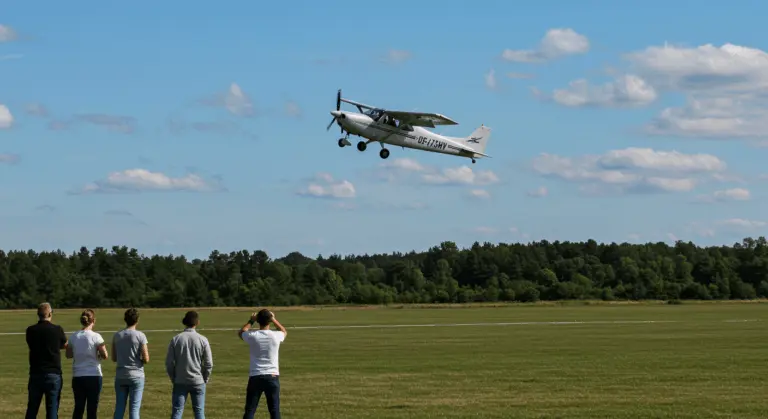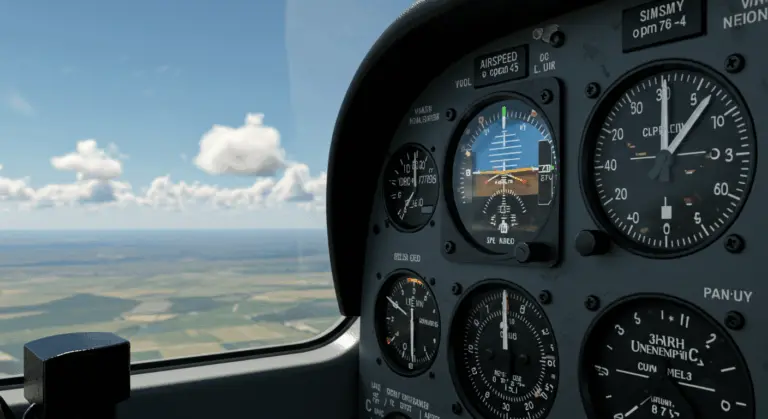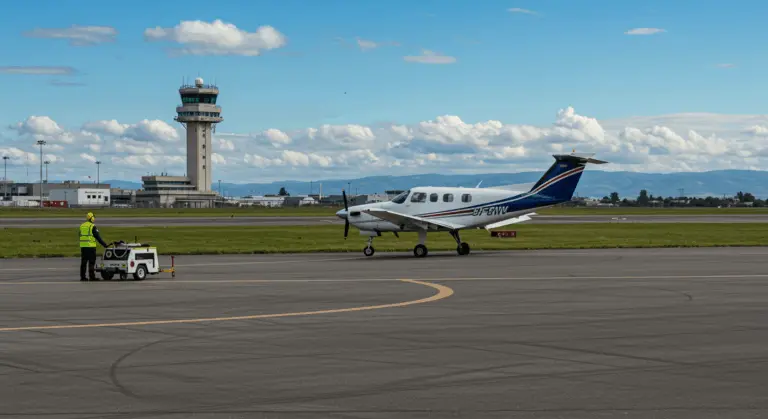Understanding Rotor Clouds – Formation, Effects, and Safety
What Are Rotor Clouds – Definition and Characteristics
Rotor clouds manifest as turbulent, rotating air masses that appear as ragged, chaotic formations on the downwind (lee) side of mountains. These formations are a specific type of lee eddy, distinguished by their horizontal vortex structure where airflow at the bottom dramatically reverses direction compared to the wind patterns above.
Meteorologists and pilots treat rotor clouds with healthy respect—and for good reason. These formations signal severe atmospheric turbulence and powerful vertical air movements. While the elegant lenticular clouds form serenely higher in the same wave system, rotors below signal genuinely hazardous flying conditions.
Formation of Rotor Clouds – The Science Behind It
Rotor clouds form through the interaction of meteorology and terrain. When stable air—naturally resistant to vertical displacement—encounters a mountain range perpendicularly, it gets pushed upward, creating a distinctive wave pattern on the lee side. Picture water flowing over a submerged rock, and you’ll grasp the fundamental mechanism.
The World Meteorological Organization (WMO) explains how these mountain waves generate a series of downwind oscillations. The initial wave crest materializes near the peak itself. As air as plunges down the lee slope, it can accelerate dramatically—sometimes creating a pronounced low-pressure zone at the mountain’s base.
This is where rotor clouds form: this accelerated airflow collides with the ground, where surface friction forces it to reverse direction entirely, creating a rotating air mass.
The most ferocious rotors typically emerge under specific conditions: a robust temperature inversion near the mountaintop, coupled with wind speeds that intensify with altitude. These factors amplify both wave amplitude and rotational force.
Turbulence Associated with Rotor Clouds – Risks for Aviation
The turbulence lurking within rotor clouds ranks among the most severe clear-air turbulence pilots will ever encounter. They create chaotic, unpredictable air movements that can subject aircraft to extreme forces, including:
-
Dramatic Vertical Speed Changes: Rising and plunging air within a rotor triggers sudden climbs that risk stalls, or rapid altitude loss that threatens overspeed conditions.
-
Severe Wind Shear and Rolling: The horizontal rotation spawns intense wind shear, inducing powerful rolling moments that can overwhelm even robust aircraft controls.
Aircraft accident records show numerous incidents where rotor turbulence inflicted serious structural damage, with extreme cases culminating in catastrophic in-flight breakups. This is why rotor clouds earn their reputation as one of aviation’s most treacherous meteorological phenomena.
Yet turbulence represents only part of the threat. Flying near rotor clouds introduces several additional critical hazards:
-
Spatial Disorientation: Rapid, erratic movements overwhelm a pilot’s vestibular system, destroying their sense of aircraft attitude.
-
Microtrauma: Swift pressure fluctuations inflict painful injuries to middle ears, sinuses, or lungs—affecting crew and passengers alike.
-
Critical Operational Challenges: Rotors transform routine takeoffs and landings into hazardous operations, introducing unpredictable wind shear and crosswinds that leave minimal recovery margin at low altitudes.
-
Dynamic Visibility Hazards: These clouds morph rapidly, concealing terrain, obstacles, or other aircraft—dramatically elevating Controlled Flight Into Terrain (FIT) risks.
-
Aircraft System Disruption: Unusual attitudes and violent accelerations disrupt fuel flow systems, while rapid vertical currents render precise airspeed control nearly impossible.
Mountain Wave Phenomena – The Connection to Rotor Clouds
Mountain wave phenomena form a complex atmospheric system where rotor clouds represent merely one visible element. These wave systems emerge when stable air encounters a mountain range, generating oscillations that can extend hundreds of miles downwind and penetrate deep into the stratosphere.
The primary mountain wave develops as air is forced over the mountain barrier. Descending the lee slope, this air can accelerate dramatically, potentially spawning dangerous down slope windstorms.
Rotor clouds inhabit the lower reaches of this wave system—specifically where airflow executes its dramatic directional reversal near the surface. The primary rotor typically establishes itself beneath the first wave crest, precisely where the most violent turbulence concentrates. Secondary rotors may materialize under subsequent wave crests, though these generally exhibit less ferocity than their primary counterpart.
Understanding this wave-rotor relationship is critical. While the upper, smoother wave sections provide the strong lift that glider pilots actively seek, the rotors below create extremely turbulent zones that most aircraft must avoid.
Lenticular clouds crowning the wave crests and rotor clouds churning below provide valuable visual cues for pilots and meteorologists alike. These natural markers reveal the presence, approximate intensity, and spatial extent of the wave system—essential for flight planning and hazard avoidance strategies.
Mountain weather orchestrates several distinct cloud formations, each acting as a crucial visual indicator:
-
Lenticular Clouds (Altocumulus lenticular is): These smooth, lens-shaped formations grace the wave crests, appearing eerily stationary despite fierce winds. Often stacking in elegant layers, they provide reliable evidence of mountain wave activity.
-
Rotor Clouds (Roll Clouds): Ragged, turbulent formations that materialize within the rotors beneath wave crests. Their chaotic appearance and visible horizontal-axis rotation mirror the violent air motion churning within.
-
Cap Clouds (Foehn Clouds): Stationary formations that crown mountain peaks like natural caps, frequently serving as the earliest visual harbinger of developing wave conditions.
However, the absence of clouds doesn’t guarantee safety. In arid conditions, severe mountain wave turbulence and invisible rotors can lurk unseen. Meteorological forecasts and pilot reports (Preps) become essential for mountain flying safety—even under deceptively clear skies.
Effective risk management in mountainous terrain requires following these best practices:
-
Complete Avoidance: Treat rotor clouds with thunderstorm-level respect—avoid them completely. They harbor comparable turbulence yet remain invisible to weather radar.
-
Maintain Generous Distance: Design flight routes that provide ample separation from visible rotor clouds, remembering that turbulence extends far beyond visible cloud boundaries.
-
Prepare Thoroughly: Secure all occupants with seatbelts and stow loose items completely. Reduce to recommended turbulence penetration airspeed well before entering suspected turbulence zones.
-
Exercise Extreme Caution: During critical takeoff and landing phases, remain hypervigilant for wind shifts while allowing extra maneuvering room. Schedule operations for early morning hours when wave activity typically diminishes.
-
Employ Sound Technique: When ridge crossing becomes unavoidable, approach at a 45-degree angle to minimize exposure time. Favor the upwind side of mountains whenever operationally feasible.
-
Practice Patience and Awareness: Allow adequate time for reported turbulence to dissipate before proceeding. Maintain sharp situational awareness through comprehensive weather briefings, current pilot reports, and careful visual assessment of cloud formations.

